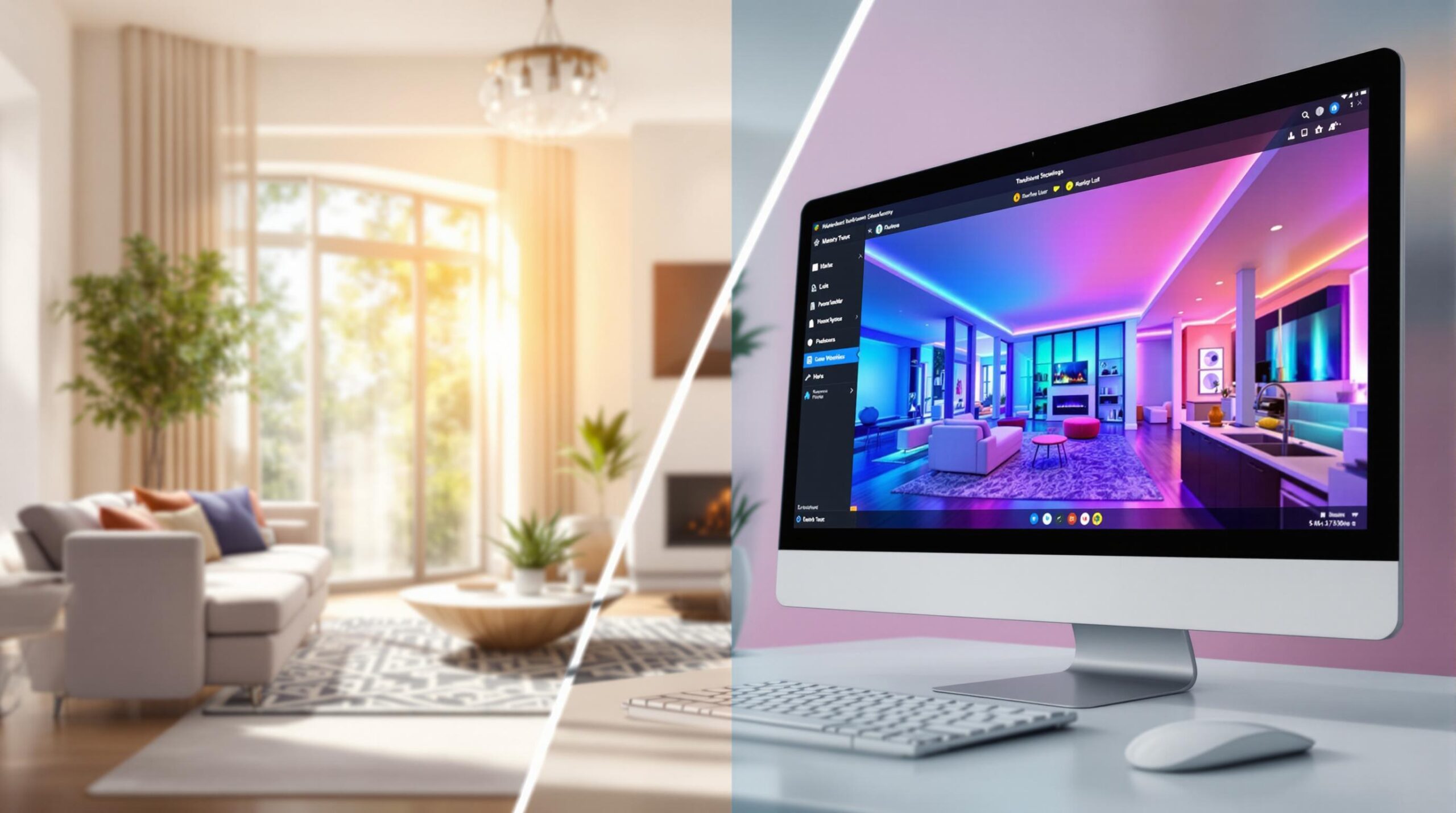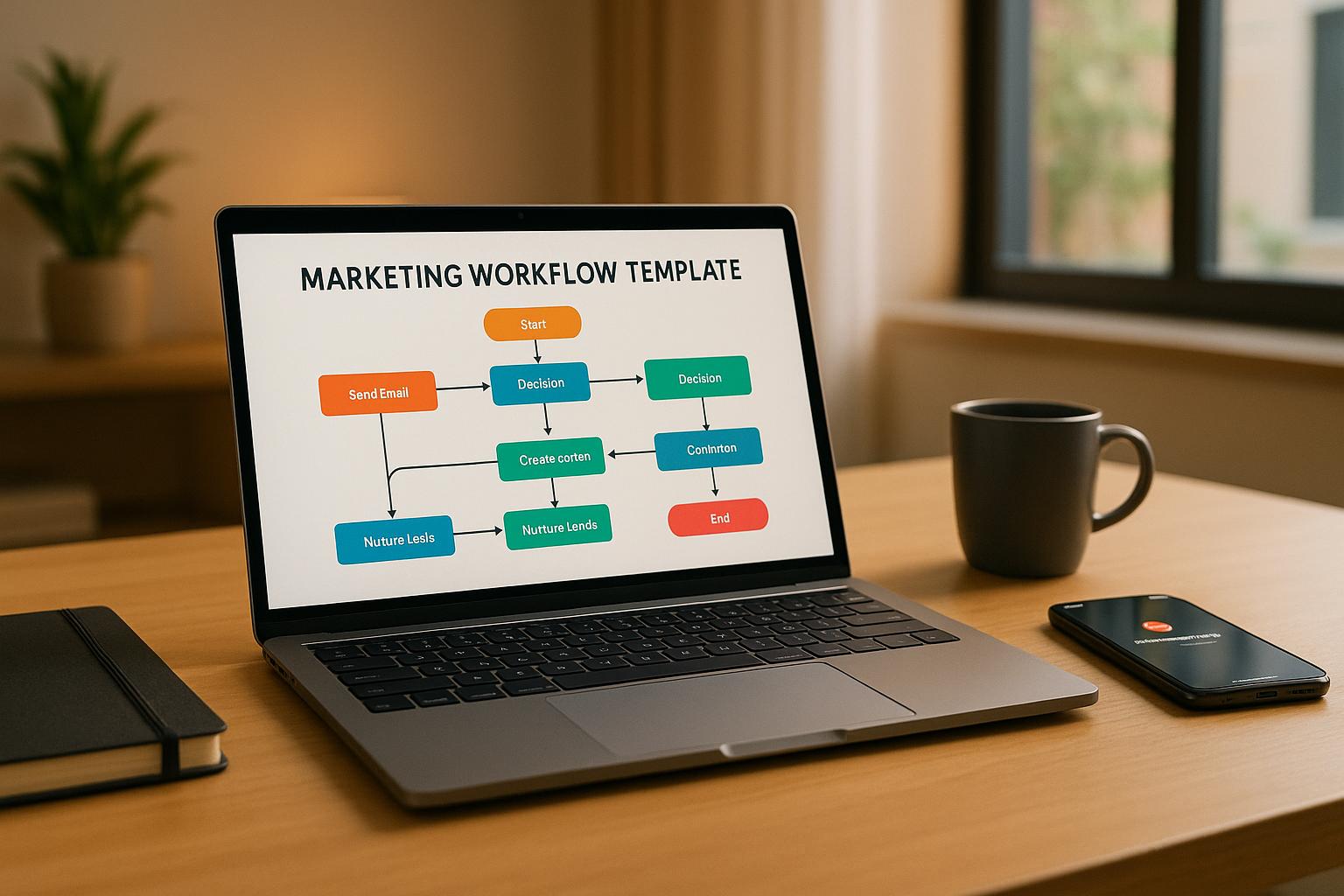Virtual tours are transforming real estate marketing. Properties with virtual tours sell 31% faster and for up to 9% higher prices compared to traditional showings. They save time, reduce costs, and attract more buyers, especially from international markets. Meanwhile, traditional showings face challenges like high staging costs, scheduling conflicts, and limited reach.
Key Findings:
- Virtual Tours: 24/7 access, 87% more views, 40% more qualified leads, and lower ongoing costs.
- Traditional Showings: Personalized interaction but higher expenses and logistical issues.
Quick Comparison:
| Feature | Virtual Tours | Traditional Showings |
|---|---|---|
| Cost | $100–$360 (one-time) | $45–$400 per showing |
| Time Efficiency | Reusable, fewer visits | Repeated appointments |
| Market Reach | Global access | Limited to local buyers |
| Lead Quality | 49% more qualified leads | Standard |
Virtual tours offer better ROI by increasing visibility, reducing costs, and streamlining the sales process. However, combining both methods can address diverse client needs.
3D Virtual Tours for Real Estate: Real Examples and FAQ
Virtual Tour Advantages
Listings featuring virtual tours attract nearly 90% more views. Let’s break down how this translates into specific benefits for property sellers and agents.
24/7 Property Access
Virtual tours make properties accessible anytime, removing the hassle of scheduling showings. This flexibility allows potential buyers to explore listings at their convenience, no matter where they are in the world.
Here’s how this round-the-clock access impacts results:
| Feature | Result |
|---|---|
| 24/7 Availability | Boosts listing exposure by 90% |
| Global Reach | Attracts international buyers |
| Website Engagement | Increases visitor stay time by 5-10x |
| Lead Generation | Generates 40% more clicks on listings |
By making properties easier to explore, virtual tours not only expand visibility but also enhance buyer engagement. And that’s just the start.
Time and Money Savings
Virtual tours reduce costs by cutting down on the need for in-person showings. Fewer physical visits mean lower operational expenses, including savings on fuel and time.
Better Lead Screening
Virtual tours also help filter out less serious buyers. According to Matterport, listings with virtual tours see a 49% increase in lead generation. This means potential buyers can evaluate properties in detail before reaching out, saving time for both agents and sellers.
Some key stats:
- 41% of Millennials say virtual tours are essential when choosing a property.
- They provide better access for clients with mobility challenges and minimize scheduling conflicts.
With more than half of online property seekers skipping listings without virtual tours, these tools have become critical for standing out in the competitive real estate market. Property listings that include them consistently perform better and deliver higher ROI.
In-Person Showing Drawbacks
While virtual tours have their perks, traditional in-person showings come with challenges like scheduling headaches, high costs, and limited market reach.
Scheduling Challenges
Coordinating showings between agents, sellers, and buyers can be a logistical nightmare. These delays and conflicts often hurt your bottom line:
| Issue | Impact on ROI |
|---|---|
| Schedule Conflicts | Missed chances with serious buyers |
| Limited Availability | Fewer opportunities for viewings |
| Coordination Hassles | Longer sales timelines |
| Last-Minute Cancellations | Wasted time and money on prep |
These hurdles make in-person showings less efficient and pave the way for other costly issues.
High Costs
Traditional staging doesn’t come cheap. It can cost up to $6,000 per property, not to mention recurring expenses for cleaning, prepping, and agent travel.
"Traditional staging can be quite expensive, and the cost varies depending on where the property is located… Traditional staging includes renting furniture, décor, and paying for professional stagers, all of which can add up quickly."
– Shital Gohil, Co-Founder and Chief Operating Officer at Styldod
Yes, staged homes sell 87% faster and can fetch 17% higher prices, but these benefits come with hefty upfront and ongoing costs that eat into your profits.
Limited Market Reach
Geography is another hurdle for in-person showings, as they naturally limit access to buyers who can physically travel to the property:
- Smaller Buyer Pool: Local buyers dominate, while those farther away are often excluded.
- Challenges for International Buyers: Overseas buyers face logistical issues in scheduling visits.
- Missed High-Value Buyers: Investors and relocating professionals often skip properties they can’t easily view in person.
These geographic barriers can mean missed opportunities and a narrower market for your property.
sbb-itb-2f9da9d
ROI Data Analysis
After examining the benefits and challenges of virtual tours versus traditional showings, let’s dive into the numbers. Here’s a breakdown of performance data to highlight ROI differences between these two approaches.
Performance Metrics
Recent studies unveil some key differences in performance indicators for virtual tours compared to traditional showings:
| Metric | Virtual Tours | Traditional Showings | Impact |
|---|---|---|---|
| Property Views | +87% more views | Baseline | Greater visibility |
| Time on Website | 5–10× longer | Baseline | Improved engagement |
| Wasted Viewings | 40% fewer | Standard rate | Saves time |
| Lead Conversion | Up to 67% higher | Baseline | Better-qualified leads |
| Implementation Cost | $100–$360 | $45–$400 per showing | Cost-effective over time |
The data clearly shows that virtual tours not only increase engagement but also reduce costs. These advantages translate into real-world results, as seen in the examples below.
Results Examples
Properties utilizing virtual tours consistently outperform those relying solely on traditional methods. Here’s how:
- Sales Performance: Listings featuring virtual tours see 46% more sales and are 115% more likely to secure bookings compared to those with static images.
- Cost Efficiency: Virtual tours can be reused for multiple viewings, cutting down on recurring costs tied to in-person showings .
- Engagement Impact: Virtual tours boost user engagement by 40% while reducing the need for physical showings, simplifying the sales process.
These results highlight how virtual tours deliver stronger ROI, making them a powerful tool in today’s competitive real estate market.
Virtual Tour Setup Guide
Technology Options
To create virtual tours, you’ll need reliable imaging equipment – either 360° cameras like Ricoh Theta or Insta360, or DSLRs for panoramic images – and the right software to bring it all together.
Here’s a quick comparison of three popular platforms:
| Platform | Key Features | Best For | Payment Model |
|---|---|---|---|
| Kuula | Mobile-friendly, unlimited tours, custom branding | Small to medium agencies | Free & Premium plans |
| Panoee | Google Street View integration, interactive hotspots | Individual agents | Free & Paid plans |
| 3DVista | Advanced editing, customizable features | Large brokerages | One-time payment |
"Kuula stands head and shoulders above the rest. It’s a perfect mix of professional features, a super easy to use interface and the price is one of the best of all the paid platforms. It’s my software of choice!"
Once you’ve chosen your tools, focus on maintaining top-notch quality throughout the tour.
Quality Standards
Virtual tours with excellent quality are proven to drive 40% more engagement than those without. To ensure your tours stand out, follow these key guidelines:
- Use consistent lighting for every shot.
- Keep the camera steady for clear, professional visuals.
- Capture full room views to provide a complete experience.
- Design intuitive navigation paths for easy exploration.
- Optimize file sizes to ensure fast loading times.
- Make sure the tour is mobile-friendly – over 50% of users access tours on their phones.
Marketing System Integration
Once your virtual tour meets quality standards, integrate it into your marketing efforts for maximum impact. For instance, Growth Realty shows how virtual tours combined with AI-driven lead generation and CRM systems can transform real estate marketing.
Here are some ways to make your tours work harder for you:
- Website Integration: Embed tours directly into property listings. This can lead to an 87% increase in views.
-
Lead Capture Tools: Add viewer tracking and forms to collect leads.
"An immersive 3D experience is what buyers and sellers want – and it pays off. Properties sell 20 percent faster and close up to nine percent higher price with a Matterport 3D tour."
- Distribution Channels: Share your tours across listing sites, social media, email campaigns, and even WhatsApp. Studies show that 92% of prospects are more likely to buy when a 3D tour is available.
Conclusion
Main Points
Virtual tours deliver strong results across essential metrics. Industry data shows properties with virtual tours sell up to 31% faster and at prices 9% higher than those without. Additionally, websites featuring virtual tours keep visitors engaged five to ten times longer.
Here’s how key metrics stack up:
| Metric | Impact | Source |
|---|---|---|
| Leads Generated | 40% more listing clicks | |
| Conversion Rate | 16–67% increase in bookings | |
| Time Efficiency | 20% faster sales cycle | |
| Buyer Demographics | 130% higher booking rate (ages 18–34) |
These numbers highlight the advantages of incorporating virtual tours into real estate marketing strategies.
Action Steps
To capitalize on these benefits, consider the following steps:
- Work with professionals: Choose experienced virtual tour providers to ensure high-quality, engaging visuals.
- Expand your reach: Share virtual tours on your website, social media platforms, and email campaigns. Properties promoted this way can see up to 48% more bookings.
- Monitor and improve: Use analytics to track metrics like view duration and conversion rates. Adjust your approach based on the insights.
- Integrate tools: Combine virtual tours with AI-powered lead generation and CRM systems for a seamless marketing strategy.
While virtual tours are a powerful tool, blending them with in-person showings can provide a tailored approach, depending on client needs and property specifics.



